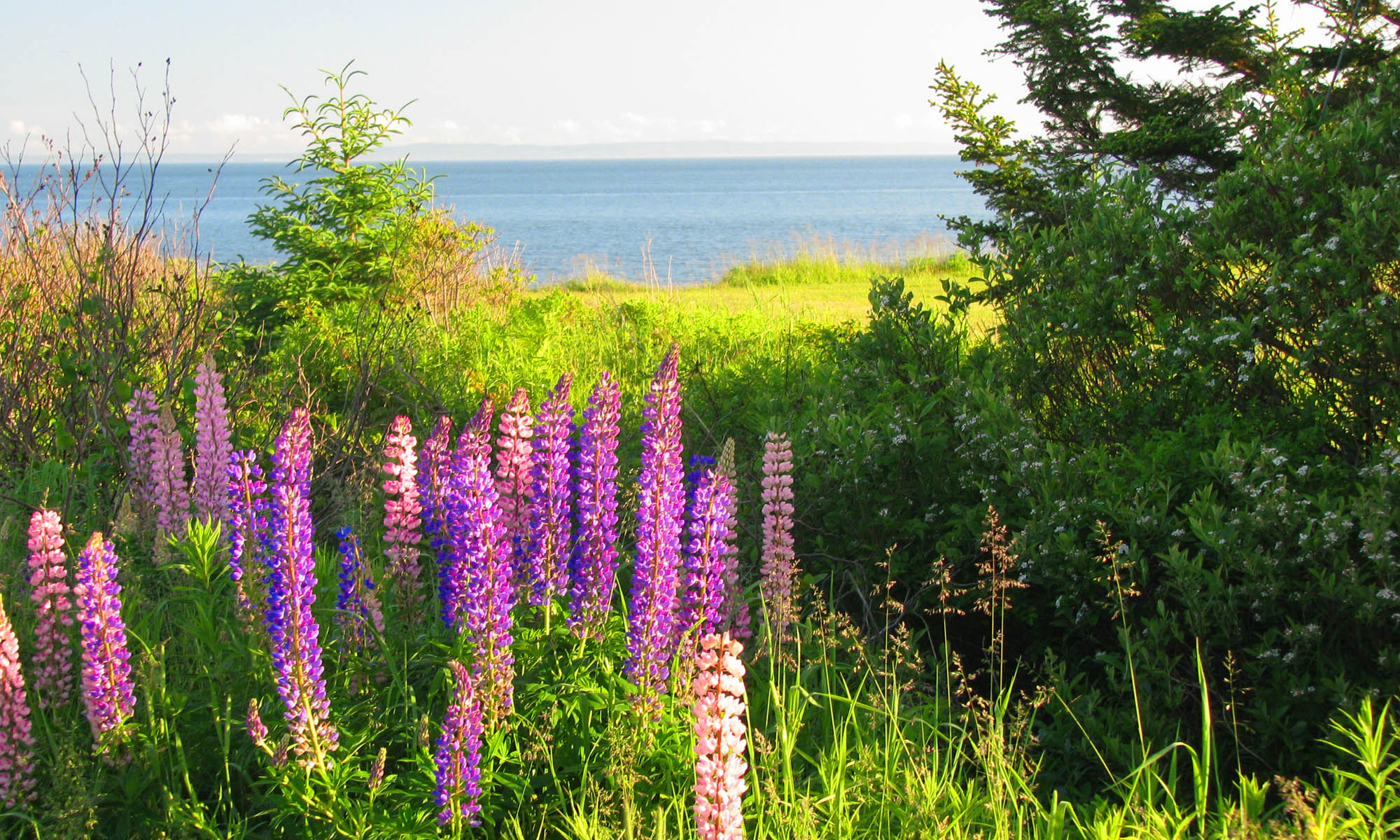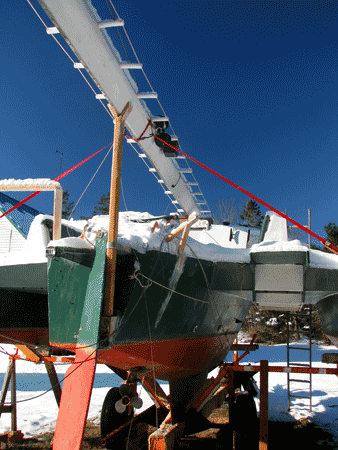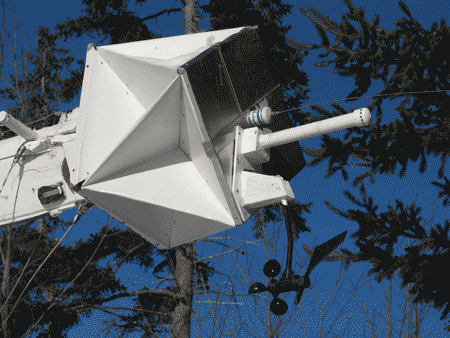I am finally done with Revisiting Scripture and can resume the book about sailing experiences on Prince Edward Island. Rather than waiting to get it all done, I thought I’d share sections as they are finished.
Mistake #___ Missing the Harbour Mouth (2005)
Back in the early days of sailing… when every trip was a novelty… on a beautiful, sunny day, we took some good friends out from the harbour in Wood Islands. There were five of us… myself and my wife, our pastor and his wife, and their teenaged daughter. There was a comfortable wind out of the west… probably in the 10-knot (~10 mph / 17 kph) range although we had no wind speed indicator back then. We sailed out from shore more or less south… sailing at 90° to the wind… called a broad reach. As became my usual Sunday afternoon custom, we sailed out for about an hour, which put us perhaps three miles out when we turned about to head back to the harbour.
There is nothing to compare with a sail in warm weather with a moderate wind, moderate waves, a blue sky with puffy white clouds, and congenial companions. Everything is so quiet compared to a powerboat! The Pastor and I sat on the foredeck and chatted while the wives sat in the cockpit and their daughter managed the tiller. “Just keep it pointed toward the harbour mouth,” were my instructions. We must have gone somewhat downwind on the way out, because the return trip entailed heading… pointing… more into the wind.
Let me digress to explain how wind moves a sailboat. If you have ever stood outside in a strong wind and felt the pressure, that same force is what moves a sailboat. In ancient times, sails were mostly side-to-side and boats blew along mostly in the direction of the wind. However, technology changed with the addition of a keel… a long, flat blade-thing sticking down in the water below the hull… and by fastening a sail diagonally instead of side-to-side. The wind can only push perpendicular to the sail… sideways to the sail it just slides on by. With a sail fastened diagonally to the orientation of the boat the wind produces a diagonal pressure. The keel resists the sideways portion of this diagonal pressure, which is why sailboats lean over to one side so much. The rest of the pressure… the forward pressure… moves the boat forward. Sideways wind producing forward motion! A simple analogy is to imagine squeezing a grapefruit seed between your fingers and having it pop out… a forward motion from two opposing sideways pressures! While my simple description has the boat moving at 90° to the wind, the best sailboats these days can go as close as 25° off the wind. Straight into the wind requires a motor or oars!
Back to our trip… we seemed to be heading for the harbour just fine. However, the closer we got, the more we were ending up east of our destination. To stay aimed at the harbour meant pointing more and more into the wind. I now know we were experiencing the combined effect of the slight sideways slippage of the keel and the whole ocean under us moving to the east… a falling tide, which at its peak near the harbour mouth at Wood Islands moves east at up to 3 knots!
I made two mistakes that day. Mistake #1: the instructions from the time we turned should instead have been to aim for a point more to the west of the destination. Mistake #2: as captain of the vessel, I should have been paying closer attention. By the time the problem became obvious, we would have had to sail directly into the wind to make the harbour mouth.
“No problem,” I said, “I’ll just start the motor and lower the sails, and we can motor directly into the wind and into the harbour.” Usually that is the way I would enter the harbour anyhow, since coming all the way in under sail is difficult to get just right… especially turning at just the precise moment to come alongside the wharf, dropping the sails at that last moment, and having the boat coast to a stop at the wall. My mentor liked to prove he was a ‘real sailor’ in that way, but a beginner can really mess up unless they do it perfectly… and if the wind is wrong there is no second chance.
Now mistakes #1 and #2 revealed ‘mistake’ #3, which came about long before I bought the boat. That day the floor of the cockpit was not just occasionally getting wet… it began to have water ponding on the floor! A ‘self-bailing’ cockpit is really just a flat floor that sits a little above the water level with holes on the sides or back so any water that should happen to get in will run right back out the holes. Water flooding in indicated the level of the floor had dropped and the drain holes were working backwards! By hindsight whoever built this particular boat modified it to have an engine well in the back to hold an outboard motor (probably not in the original design). It was a rectangular ‘box’ with an open bottom… and open top… so the motor could clamp onto the front side of the box just as it would clamp to the transom of any small boat. That day I learned that, given the right wave conditions and weight distribution of passengers, water could come over the top of that ‘box’ and start filling the stern area. As that area started to fill, the overall buoyancy decreased, making the boat ride lower and allowing even more water to surge in with each wave. “Oh, yeah, we did have that trouble once or twice,” the previous captain later told me.
As I took the cover off the motor well to start the outboard, I saw all that water and panicked. The gas can was floating upside down and I feared water had gotten into the gas. By hindsight I think turning the can over would have worked because in an upside-down can the gas pickup is not down in the gas. I started the motor but it soon stopped. I now know the separate outer hulls on that trimaran will always keep it from sinking, but at the time, we seemed powerless and in danger, stranded just east of the harbour mouth within shouting distance of the lighthouse. The water was shallow, so I dropped the sails, threw out the anchor, and radioed for help! Fortunately, the Wood Islands Ferry was right in the harbour, picked up my signal, and dispatched one of their motorized lifeboats to come out and tow us in. They did not charge us anything, but they must have been laughing about it for days. It was certainly a memorable trip, but I could never talk our friends into coming out again.
Never the same mistake twice: First, for my short out-and-back trips I never start out going downwind. Whatever the initial direction of the wind and anticipated direction of the tidal current, I make sure the outward trip will position the boat so the return trip can go with the tide and 90° to the wind. Occasionally over the two-hour trips, the wind will shift or die down, so the motor does come into play.
Secondly, I never give over paying attention to what is happening even if I am not at the tiller.
Thirdly, I made a technical mistake in using the radio… having not yet taken a marine radio course, I called “Mayday” like you see in all the old movies, whereas I should have called “Pan, pan,” which are the internationally agreed upon (French?) words to use when there is no immediate danger to life or property. A half-day radio course in Charlottetown remedied this and provided a radio operator’s license, but there is so little traffic or radio traffic in my area, it was no problem.

It would have been contrary to my entire philosophy of sailing to allow the engine-well design flaw to remain! As shown in the diagram above, within a few weeks I sealed off the stern area at the top of the engine well with a carefully-fitted sheet of plywood so any water that might wash in through the well now runs right back out. I epoxy coated the plywood sheet like all the rest of the boat so the wood would not rot and sealed the edges with fibreglass tape. Before sealing off the new inside deck, I filled the hollow area with plastic milk bottles and expanding foam in case there might someday be a leak. By hindsight, I should not have used house-insulating foam because it is open-cell and can take on and retain water, but there has been no evidence of trouble. For a year or two, the 5-gallon gas can resided on the new platform until eventually a later modification replaced it with an 11-gallon polypropylene below-deck gas tank. Never again would an inverted gas can disable the motor!


